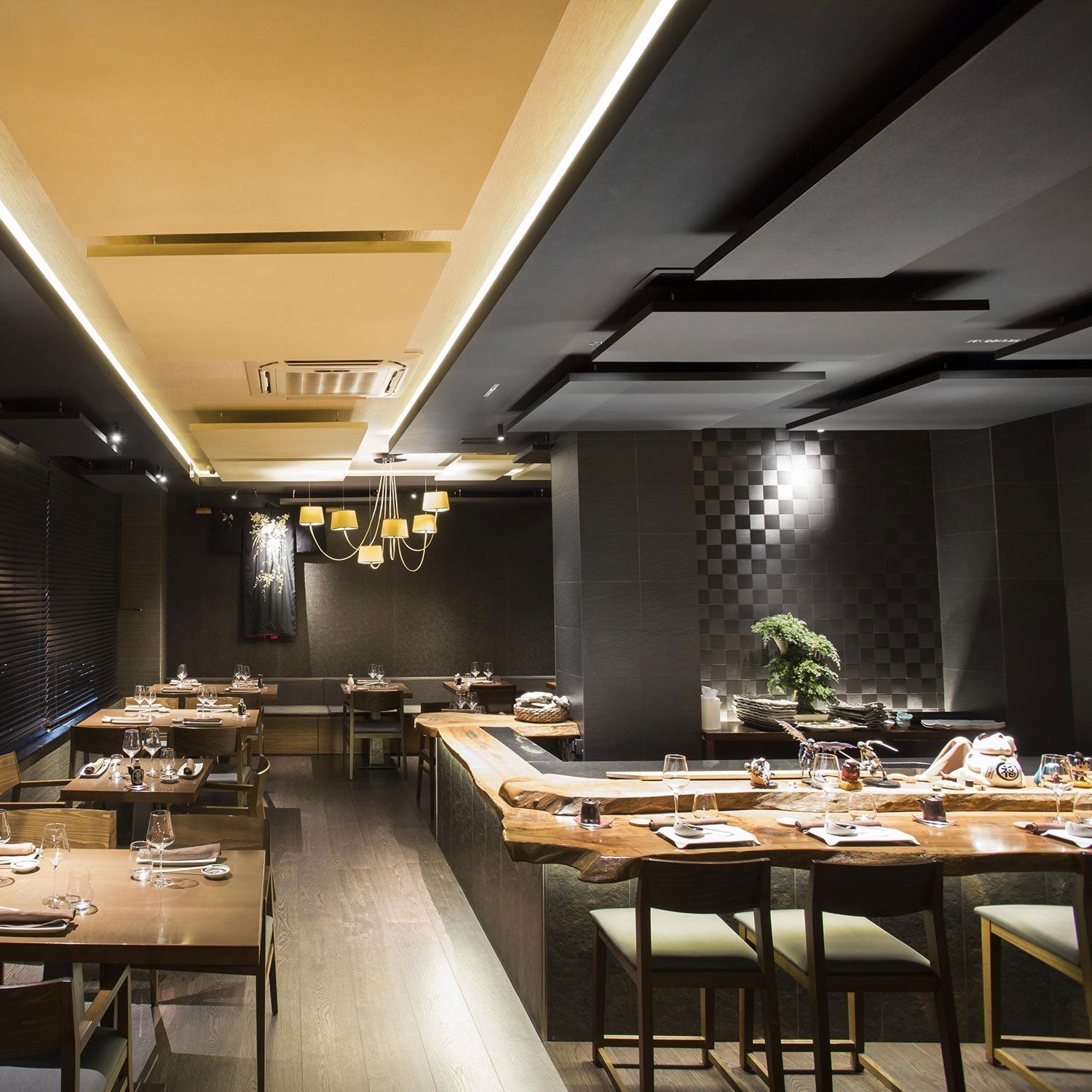Environmental noise has been identified as the second largest environmental health risk in Europe. In our modern, busy, noisy world it’s not surprising that we can struggle to focus at work, school or in the home.
Excess noise is a significant problem in many learning spaces. It is not only the children who struggle in classrooms with poor acoustics but the teachers as well. Studies show that teachers use their voice for 60% of their day and are 32 times more likely to have voice problems. The vocal strain is often due to fact that the teaching environments are not being considered acoustically when they are built. Strained speech is also flatter in pitch, and therefore trying to be heard above the background noise which is not only harder to hear clearly but is likely to be interesting to listen and less engaging for the student which in turn can lead altered behaviour. To understand the impact sound can have, it is interesting to look at the wider effect of sensory stimulation during our day.
In ever changing teaching and learning environments
Perhaps it is time to embrace and understand more about our sensory characteristics. These characteristics can define natural instincts and therefore our subsequent behaviour. Understanding and addressing this can support improved interactions between people, environments and resulting human behaviour.
Sensory stimulation affects the way we act within our homes, workspaces, and even our relationships. The sensory stimuli consist of the visuals we see, our auditory, tactile (touch), gustatory (taste), vestibular (movement) and proprioceptive (body awareness). All of these senses have a large impact in the way we learn and focus. Our lives are full of so much choice that such sensory stimulus often affects us subconsciously, however when we become aware of the effect of sensory stimuli we are then able to modify our environment to maximise our comfort and productivity.
An expert in this area is Dr Annmarie Lombard from South Africa who works with sensory intelligence. She has recently been interviewed by our colleague Lauren Kruger where she outlines the benefits of understanding the sensory process. This is how people are wired, the sensory profile. This comes down to human connections; initial body responses, subconscious responses which are instinctive lead to personality behaviour. Understanding individual profiles, be it in children or adults, can inform us about potential team fit and then suitable use of space for different profiles.
Listen to our new podcast Senses and Space for a deeper insight into sensory intelligence here.
We react to being surrounded by sound in many different ways. Our hearing was originally the ‘fight or flight’ stimulus that evolved to help us survive from other species, so noisy environments are often stressful. The reaction can be involuntary; for example, misophina is a condition in which negative emotions, thoughts and physical reactions are triggered by a specific sound. People who suffer from this condition struggle to be around people sniffling, chewing, tapping and scratching, and can become socially isolated as a result.
Sensory overload in the classroom
Children with autism perceive sensory input differently, with the disorder described as “sensory integrative dysfunction” in which sensory input is not integrated or organised by the brain. This creates strain on a child’s learning and engagement within a classroom causing them to be distracted easily, have over-attention to detail, anxiety, and observable behaviours. Improving classroom acoustics to reduce excess noise is an important element in creating a happier learning space, alongside other sensory integration techniques which facilitate attention and awareness.
Our world is getting more complex by the day, with our senses being bombarded from all directions. Perhaps this overstimulation has affected our productivity more than we realise? To learn about your own reaction to sensory stimuli, why not complete this online test?
Additional related sites:
By considering sensory intelligence you are better able to design a room which works with the human reaction to sensory stimulus, enhancing people’s learning and comfort.



